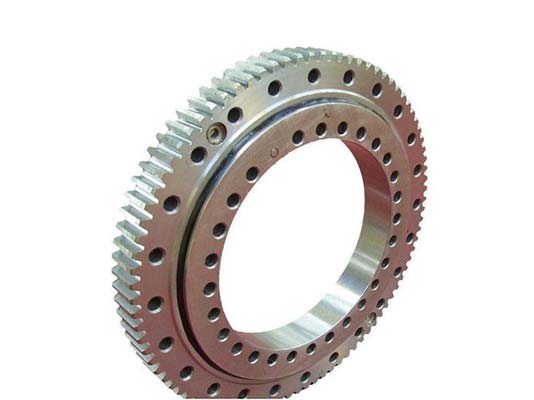- Contact Innally, Let you purchase forgings in China more favorable prices, products more assured!
- Hotline:+(86)15038323776 Email:innally@innally.com
Production process of wind power forgings: key steps and considerations
- Category: Aluminium alloy forging, Wind power forging
- |
- Date: 27/10/2023
the production process of wind power forgings needs to strictly control the quality and operation specifications of each link to ensure that the quality and performance of the final product meet the requirements. In the actual production, it is necessary to flexibly adjust the process parameters and methods according to the actual situation, constantly optimize the production process and improve production efficiency.
Product Details
With the rapid development of wind power generation, wind power forging as a key component of wind power generation equipment, its production process and quality control are becoming more and more important.
First, prepare materials
Material preparation is the first step in the production of wind power forgings, which mainly includes the selection of appropriate materials and the preparation of the required quantity. Commonly used materials include steel, alloy steel and so on. In the process of preparing materials, the following points need to be noted:
Material selection: According to the use requirements and performance requirements of the forging, select materials that meet the standards.

Quantity check: to ensure that the quantity of prepared materials is accurate, to avoid production interruption or waste due to insufficient or excess quantity.
Two, heating
Heating is to heat the material to the temperature required for forging in order to reduce the hardness of the material and improve the plasticity. During the heating process, the following points need to be noted:
Heating temperature control: According to the type of material and forging requirements, the heating temperature is controlled to avoid deformation or cracking of the material caused by too high or too low temperature.
Heating time control: reasonable control of heating time to ensure that the material is fully heated and improve plasticity.
Three, forging
Forging is the shaping process carried out on forging equipment to form forgings in the desired shape. In the forging process, the following points need to be noted:
Mold design: According to the forging shape and size requirements, design a reasonable mold to ensure accurate forging. Forging control: reasonable control of the intensity and frequency of forging to avoid deformation or cracking of the material due to too much intensity or too many times.
Cooling control: reasonable control of cooling speed to avoid material cracking due to excessive cooling.
- Heat Treatment
Heat treatment is to change the internal structure of the material through heating, insulation and cooling and other technological means to improve its hardness, strength and wear resistance. In the heat treatment process, the following points need to be noted:
Temperature control: According to the type of material and heat treatment requirements, control the heating temperature and holding time to ensure that the material fully changes the internal structure.
Cooling speed control: reasonable control of cooling speed to avoid material cracking due to excessive cooling.
- Pickling and cleaning
Pickling cleaning is to remove impurities and oxide on the surface of the forging through pickling, sandblasting and other means to improve the surface quality. In the pickling cleaning process, the following points need to be noted:
Pickling fluid selection: Select the appropriate pickling fluid according to the material and impurities of the forging.
Pickling time control: reasonable control of pickling time to avoid material corrosion due to too long time.
Sandblasting control: reasonable control of sandblasting strength and time to avoid material damage caused by excessive sandblasting.
Vi. Correction
Calibration is the dimensional correction of the forging to meet the design requirements. In the correction process, the following points need to be noted:
Calibration tool selection: Select the right calibration tool according to the forging shape and size requirements.
Calibration method selection: Select the appropriate calibration method according to the actual situation, such as pressure correction, flame correction, etc.
Correction force control: reasonable control of correction force to avoid material deformation or damage due to excessive force.
Vii. Inspection
Inspection is the quality inspection of the forging, including size, surface quality, hardness and so on. During the inspection process, the following points need to be noted:
Clear inspection standards: Clarify the standards of each inspection item to ensure the accuracy of the inspection.
Inspection tool selection: Select the appropriate inspection tools according to the inspection items, such as calipers, microscopes, etc.
Treatment of unqualified products: repair or scrap unqualified products to prevent unqualified products from entering the market or affecting product quality.
In short, the production process of wind power forgings needs to strictly control the quality and operation specifications of each link to ensure that the quality and performance of the final product meet the requirements. In the actual production, it is necessary to flexibly adjust the process parameters and methods according to the actual situation, constantly optimize the production process and improve production efficiency.
nannan
INNALLY mainly provides you with various types of cast and forged parts products. Welcome your inquiries! innally@innally.com
Related Products
Search
Forging center
- Steel forgings
- Aluminium alloy forging
- Titanium alloy forging
- Stainless steel forging
- Copper forging
- Automotive forgings
- Locomotive forging
- Bicycle forgings
- Motorcycle forging
- Rigging and fasteners
- Bearing forging
- Electric power fittings
- Marine forging
- Mechanical forgings for metalworking
- Mining machinery forgings
- Marine engineering forgings
- Construction machinery forgings
Popular product

© 2025. All Rights Reserved.






